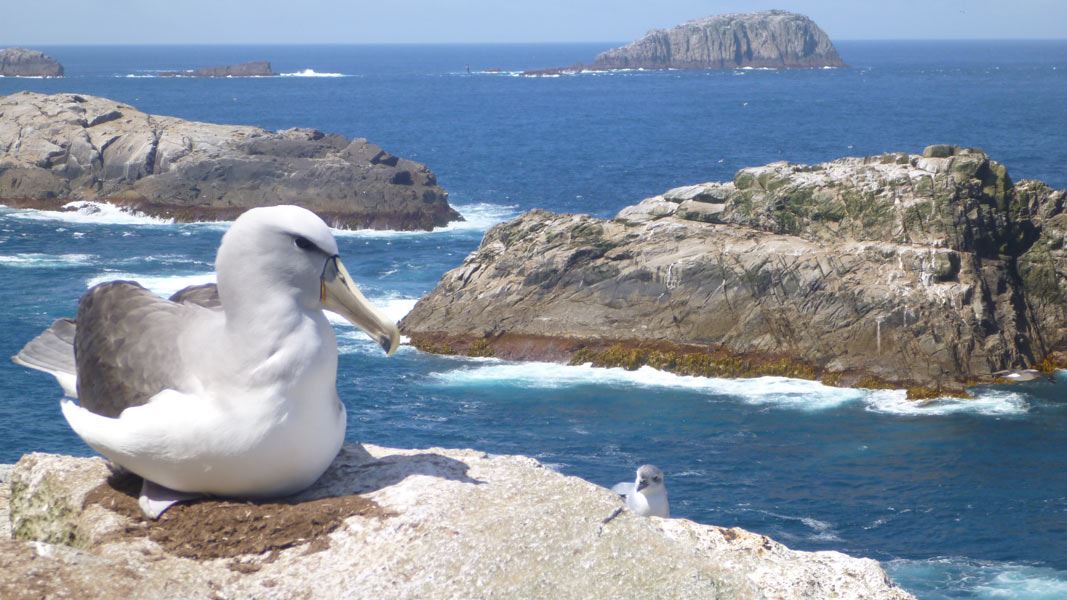Threats
Fisheries by-catch
Albatross feed by searching the sea surface for dead squid and fish. Many have learnt that fishing vessels offer an easy food source and follow them, feeding on fish bait and scraps. Usually they take the bait without coming to any harm, but occasionally they get caught on a hook and are taken down with the line and drown.
While most fishing boats catch very small numbers of albatross, scientists are concerned that because many hundreds of fishing boats are setting lines around the world the total numbers caught may be having an impact on some populations.
Drift nets have taken a huge toll on seabirds. In 1990, it was estimated that a million seabirds were drowned in drift nets each year. A convention prohibiting fishing with long drift nets in the South Pacific was signed in New Zealand in 1989 and entered into force in 1991. This paved the way for a United Nations resolution in 1991 calling for a global moratorium on long drift nets on the high seas.
Marine pollution
Oil spills and rubbish dumped at sea are hazards for seabirds. Thousands of seabirds die in the northern hemisphere each year from swallowing small pieces of plastic. Although it is thought to be less of a problem in New Zealand, regurgitated plastics are often found beside royal albatross nests on Campbell Island.
Our work
Reducing the threats
Fishermen do not want to catch seabirds, and in New Zealand money collected as a levy from the fishing industry is being used to develop new ways of preventing them from getting caught.
DOC is responsible for the care and management of New Zealand's albatrosses and is working closely with the fishing industry and with international researchers to tackle the threats facing these ocean wanderers. DOC initiatives include Southern Seabird Solutions. This is a trust which promotes better fishing practises that do not catch seabirds.
A combination of regulation and innovative techniques such as bird-scaring lines, weighted lines, underwater bait-setting devices and retention of offal can reduce the by-catch of albatrosses.
Recovery plan
Recovery plan for albatrosses in the Chatham Islands, 2001-2011 (PDF, 195K)
Satellite technology
Satellite transmitter packages developed by French, British and Australian researchers are being used at various locations around New Zealand to track the birds' flight paths. Signals from tiny transmitters attached to the birds are monitored by satellite. The information gained will help scientists learn more about the birds while at sea, so they can determine the areas and times of greatest risk to them.
Care of breeding sites
A key role for DOC is looking after the birds' breeding sites. Entry to the island sanctuaries where they breed is strictly controlled. The establishment of the Richdale Observatory at Taiaroa Head has helped protect the mainland population of royal albatross.
You can help
Report a sick or dead albatross
If you find sick or injured albatrosses, make sure they are not being harassed by people or dogs, and contact 0800 DOC HOT (0800 362 468).
If you find dead birds, check their legs for metal leg bands and send the band number and location information to the National Banding Office bandingoffice@doc.govt.nz.
Learn about friendly fishing practices
Southern Seabird Solutions work with commercial and recreational fishers to to reduce the harm to seabirds from fishing.
Fish the sea not the sky was published by the Commission for the Conservation of Antarctic Marine Living Resources. It gives advice on how to avoid by-catch of seabirds when fishing with bottom longlines.
